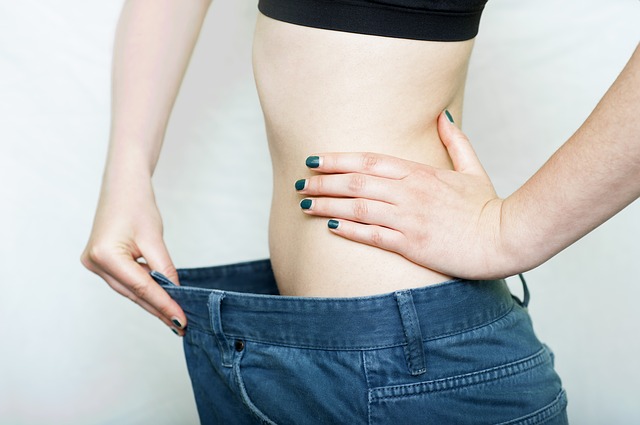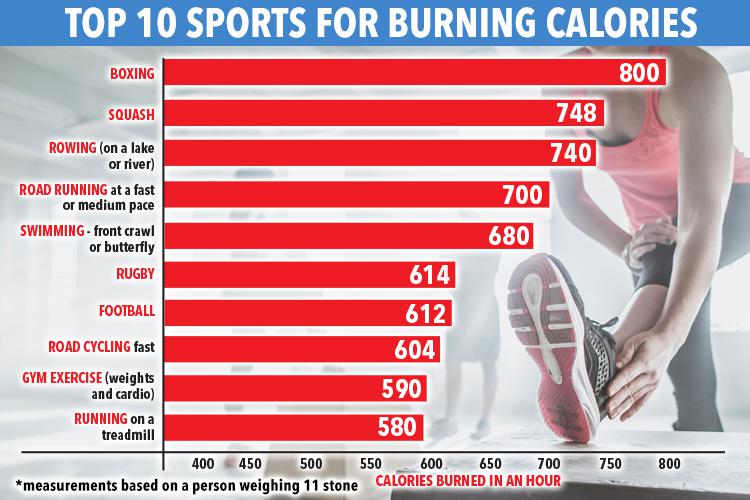
Swimming is an excellent way to burn calories. You can also choose from many different workouts. No matter your level of fitness, there is a swimming program that will suit you. This article will discuss how to increase your calorie burn with swimming. Continue reading to learn more about backstroke and freestyle, as well as some exercises you can do while swimming. These are just a few of many swimming exercises that you might be familiar with.
Freestyle swimming burns 300 calories per hour
You can burn calories by swimming, but it depends on many factors such as your speed and intensity. You'll also need to consider the different body parts involved in various swimming strokes, which can either increase or decrease your calorie burn. Swimming can burn as many as 300 calories per hour according to some scientists, but it is actually more complicated. While you can estimate how many calories you're burning by swimming, most experts agree that such estimates are educated guesses.
Swimming burns more calories per hour than any other exercise. However, the length of your workout will impact how many calories you lose. For example, swimming for one hour per week will result in you burning 300 calories an hour. You can increase intensity by changing up your strokes. Freestyle swimming (or freestyle plus the backstroke) burns about 600 calories an hour. Swimming at a moderate temp is the best way to burn calories if you are just beginning.

250 calories burned per hour by backstroke
While the backstroke is not the most natural of swim strokes, it can be a very effective exercise for toning your body and burning calories. Backstroke strengthens the chest, shoulders, and buttocks, as well as stretching the spine. 250 calories can be burnt in one half-hour of backstroke. This is a great option for those who work at a desk all day. It will improve posture, tone the stomach, and toning the arms.
It's easy to figure out how many calories you will burn swimming. Most people don't know exactly how many calories they'll burn when swimming for just half an hour. However, there are some things that you should know. You'll burn more calories if you swim for enjoyment or competition. Swimming is a great way for you to lose weight, especially if your goal is to swim for health reasons.
Your swimming intensity will affect your calorie burn
The speed and intensity of your swim affects the amount of calories you burn. If you swim at a slower speed, you will burn fewer calories. If you swim at a fast speed, you will burn more calories. You can increase your energy output, drag and burn calories by using swim devices. A faster swimmer will burn more calories in half the time. A slower swimmer will burn less calories over a longer distance, but swimming at a medium speed can increase the intensity your workout.
Beginners should not sprint for too much. Begin slowly and alternate between slow swimming and harder laps. This will increase your stamina. You can also try other forms of exercise. You can also try swimming with different strokes, such as backstroke, butterfly and breaststroke. You can also swim faster for 15 minutes to burn more calories.

Exercises to burn more fat while swimming
Swimming is a good exercise for the heart, but there are ways you can increase your calories. The first step is to learn how and when to swim correctly. Swimming with perfect form will help you burn more calories. Follow these guidelines for how to do it.
The tuck jump is a great exercise to do while swimming. This exercise will strengthen your arms and core. Although it is easy, it can be challenging if you have never done this exercise before. You can start with a 1 minute interval and increase that to 3 minutes. You can tone your arms by adding resistance. You should do at least ten of these repetitions.
FAQ
What amount of exercise is necessary to lose weight?
There are many factors that influence the amount of exercise required to lose weight. These include your gender, age, body type and how heavy you are. Most people require moderate activity at least five days per week.
The American College of Sports Medicine recommends 150 minute of moderate-intensity aerobic activities per week. These should be done over three days.
If you are trying to lose 10 pounds, 300 minutes of moderate intensity exercise per week is a good goal. This includes activities like jogging or running, swimming laps and biking.
You can start out by doing 20 minutes of intense activity three times a week. You could do sprints, lifting weights or jumping rope.
Aerobic exercise helps to build muscle mass and burn calories. Muscles can burn more calories that fat. You may be able to achieve your goal quicker by building muscle and losing fat.
How often are people quick?
Most people who adhere to a ketogenic lifestyle fast only once per week. But, some people fast twice per week. Others fast three times a week.
The length of each fast varies too. Some people fast for 24 or 48 hours, while others go for 48.
Some people may even stay awake for 72 hours. However, these extreme cases are rare.
Why Exercise is Important for Weight Loss
The human body, an amazing machine, is incredible. It's designed to move. Move your body to stay healthy, whether you are running, swimming, biking or lifting weights.
Exercise also burns calories and improves muscle tone. This makes you feel good both physically and psychologically. People may have heard that exercising is important for weight reduction. But how can this be true?
-
Exercise increases metabolism. Your body uses energy when you are active. Every time you move, your heart beats faster, blood flows to your muscles, and your lungs absorb oxygen. These activities all require energy. Your metabolic rate increases, which means you'll burn more calories while exercising. Calories refer to how much energy you use during physical activity.
-
Exercise reduces appetite. Working out will help you to eat less and make you feel fuller all day.
-
Exercise builds strength. Muscle tissue takes more energy to work than fat tissue. You will be able to lose weight if you have more muscle mass.
-
Exercise releases endorphins. Endorphins can make you happy. When you exercise, they are released into the bloodstream. Endorphins are known to block pain signals from your brain. This creates a sense of well being.
-
Exercise can boost self-esteem. Exercise regularly leads to higher self-esteem. And this leads them to live healthier lives.
If you want to lose weight, start with small changes. Consider adding these tips to your daily routine.
Why lose weight before you reach 40 years old?
For people over 40, maintaining good health and fitness are essential. It is crucial to find ways that you can stay fit throughout your entire life. Regular exercise, healthy eating, moderate alcohol consumption, and quitting smoking are all important.
It is also important for us to realize that our bodies will change with age. Our bones begin to weaken and our muscle mass begins to shrink. We can slow down the aging process by taking care of ourselves.
Staying healthy and fit throughout your life is a great way to keep yourself young. These benefits include:
-
Better sleep
-
Improved moods
-
Increased energy levels
-
Lower risk of developing cancer
-
A longer life
-
More independence
-
More sex
-
Greater memory
-
Concentration is key
-
Better circulation
-
Stronger immune system
-
Fewer aches, pains
How long should I fast intermittently to lose weight
The answer is not as simple as you might think. For optimal fat loss, you need to take into account many factors. These are:
-
Your age. You may find intermittent fasting too difficult if you're younger (under 40) because you have less time between fasts. Alternately, if your age is over 60, intermittent fasting might prove too challenging because you may not have enough energy to last for extended periods of time.
-
Your current body composition. You'll be most successful if you have lots of muscle mass. If you don't have a lot of muscle mass, shorter fasting periods may be more suitable.
-
How physically active. Regular exercise may mean that your fasting window needs to be extended to allow you to get sufficient rest between sessions.
-
Your past medical history. Extra fasting may be necessary for people who have heart disease, diabetes, cancer, or other medical conditions.
-
How can you manage stress? Stress can often lead to us eating more. To avoid this, you might want to increase the lengths of your fasting window.
-
It is the type of diet you are following. Certain diets, like ketogenic diets, may require even longer fasting periods.
-
Your sleep quality. The quality of your sleep is also a factor in increased appetite and decreased metabolism. Therefore, it may take some experimentation before determining what works best for you.
-
The amount of protein that you consume. Protein helps stabilize blood sugar levels, which means that eating more protein could potentially lead to lower insulin levels. This would allow you be more consistent in your fasting.
-
No matter if you are trying gain or lose weight. People trying to gain weight often need longer fasting periods than people trying to lose weight.
-
What percentage of calories do you consume during your fasting window? Fasting fewer calories per day may result in greater fat loss than fasting for more calories per day.
-
Your overall fitness. People who are fit and fast burn more calories per day.
-
Your gender. Women tend to have a greater appetite than men, so they might need to fast for longer periods. Women generally have smaller appetites, so they may only need to fast for about 20-30 minutes every morning.
-
Your lifestyle. Are you someone who is active? Are you able to exercise several times per week? Do you work at a desk all day? These factors can impact how fast you should be moving.
-
How much money do you spend on food? Healthy eating doesn't mean you have to spend a lot on groceries. Whole grains can be replaced by white bread, fruits can replace candy bars, and lean cuts of meat can be used to save money.
-
How important it can be to control your appetite. You may not have to fast as often if it is important to eat regularly.
Statistics
- One 6-month study showed that simply doing 11 minutes of strength-based exercises 3 times per week resulted in a 7.4% increase in metabolic rate, on average. (healthline.com)
- Another study found that 24 weeks of weight training led to a 9% increase in metabolic rate among men, which equated to burning approximately 140 more calories per day. (healthline.com)
- A 12-week study in 20 women with obesity found that walking for 50–70 minutes 3 times per week reduced body fat and waist circumference by an average of 1.5% and 1.1 inches (2.8 cm), respectively (healthline.com)
- One study in 9 active men found that HIIT burned 25–30% more calories per minute than other types of exercises, including weight training, cycling, and running on a treadmill (18Trusted Source (healthline.com)
External Links
How To
How to exercise for weight loss
Being active is one of the best methods to lose weight. Many people are not aware of how to properly exercise. You should do cardio exercises, such as swimming, running, walking, swimming, etc., as well as strength training exercises, such as pulling up, pushingups, pull-ups and lunges. The most effective way to lose weight is to combine these two types of exercises together. Find friends who are open to joining you on your exercise journey. You have two options: you can join a gym or just walk around your neighborhood. It doesn't matter what activity you choose; just make sure you do it consistently. It's easy not to stick with a routine when you first start working out. Just keep going!